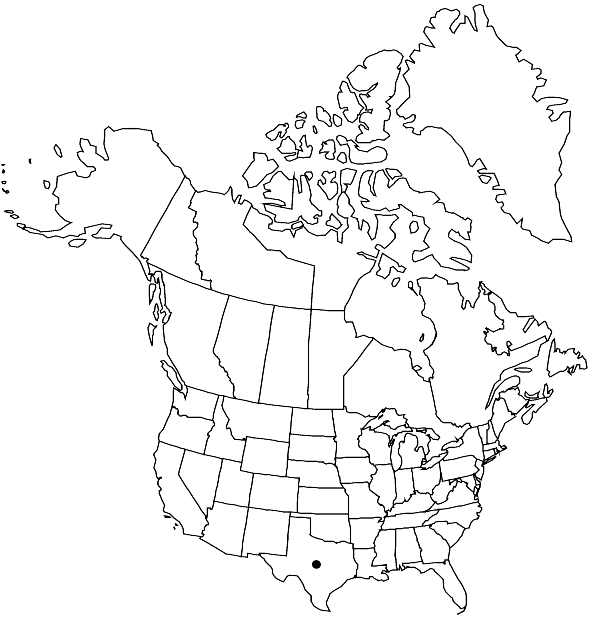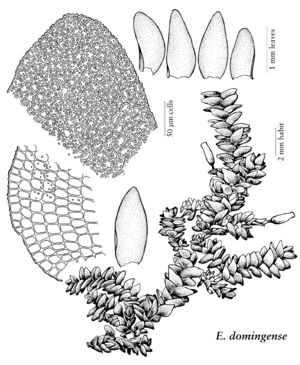Difference between revisions of "Erpodium domingense"
Bot. Zeitung (Berlin) 1: 774. 1843,.
FNA>Volume Importer |
FNA>Volume Importer |
(No difference)
| |
Revision as of 21:54, 16 December 2019
Plants dull green, often somewhat yellowish or brownish, irregularly branched, in dense mats. Leaves loosely appressed when dry, spreading and ± complanate when wet, asymmetric, ovate to elliptic, rounded to obtuse, 0.5–0.9 mm; laminal cells pluripapillose, rounded-hexagonal, 14–19 µm, oblate-hexagonal in several rows at margins proximally. Perichaetial leaves not enlarged, ovate, obtuse to acute, sheathing. Seta to 0.5 mm, somewhat curved. Capsule shortly exserted, oblong-cylindric, to 1 mm, stomatose; annulus and peristome absent; operculum obliquely rostrate. Calyptra 0.5 mm, smooth to ± papillose, ± plicate, plicae smooth. Spores 26–32 µm, finely papillose.
Habitat: Dry areas on bark of trees, shrubs and exposed roots, rotting wood, rocks
Elevation: low elevations
Distribution

Tex., Mexico, West Indies (Cuba, Dominican Republic, Haiti, Jamaica, Puerto Rico, St. Thomas), Central America (Panama), Pacific Islands (Galápagos Islands).
Discussion
Erpodium domingense is found in Cameron and Hidalgo counties.
Erpodium domingense might be confused with Solmsiella biseriata. Both species have pluripapillose laminal cells. The leaves of E. domingense, however, are arranged in several rows and are more or less monomorphic, whereas the leaves of S. biseriata are arranged in four rows and are distinctly dimorphic. Erpodium cubense E. G. Britton, endemic to Cuba, is similar to E. domingense but has much smaller laminal cells (9–11 µm), emergent capsules, and smaller spores (18–20 µm).
Selected References
None.
